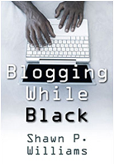Is Dallas a Whole City?
Yesterday I attended the second annual J. McDonald Williams Institute Conference. The Williams Institute is the research arm of The Foundation for Community Empowerment, whose vision is to "…catalyze Dallas into being a city where all residents have the opportunity to realize their full potential and live in vibrant, thriving communities." FCE focuses most of its work in the South Dallas/Fair Park area.
Dr. Marcus Martin, who serves as Director of The Williams Institute, hosted the conference. Dr. Martin, along with Keynote Speaker Robert Weissbourd were recently featured in a Dallas Morning News article, The fix for URBAN BLIGHT?, which focused on community specific economics in "inner-city" neighborhoods.
FCE President and CEO Marcia Page, and the group’s founder, J. McDonald (Don) Williams, set the tone of the meeting early. Ms. Page described the institute's work as "democratizing information," and using the data to form solutions. Mr. Williams, former CEO of Trammell Crow Company, talked about the widening gap between those who have wealth, and those who find themselves being left behind. He stressed that systems don't change without data and information.
Highlights from the conference:
State Senator Royce West
Sen. West reflected on a period last year when there was a melee at a Duncanville/Cedar Hill football game, a young man killed after a Richardson football game, and another young man who was beaten to death after a party. He said he realized that traveling the country and setting policy is good, but that we must all make a difference in our own communities.
Williams Institute Associate Director Dr. Timothy Bray
Communities will not be whole until they begin to share in one another's pain. He likened it to the joy you would have for a sister having a baby, or a feeling for a brother who is going through personal problems. He also said students who score in the 700's on their SAT's have an 18-28% chance of graduating college in 4 years.
CRIME/SAFTEY BREAKOUT
The Dallas City Charter calls for 3 police officers per 1000 residents. City currently sits at 2.4 officers per 1000 residents, 600 short of their goal. New York City by contrast has 4.8 officers per 1000 residents. Also, crime in Dallas would be considered "bad", only in two areas of town: South Dallas, and the Northwest Highway area of town that houses a number of strip clubs. Crime in the rest of the city is pretty much average. Perception is the biggest problem.
ECONOMIC BREAKOUT
Dallas is competing for resources (namely people), and must continue to find ways to produce and attract those resources. Although the suburbs feel independent, their national image is tied to Dallas. The focus must go from local thinking to global thinking in order to participate in a global economy.
According to the Wholeness Indicators set by the institute, Dallas fairs well in Crime, Wealth, and School Holding Power (middle-class families using public schools). The worst areas were middle-class housing, SAT scores, fit housing, and graduation rates. (For an explanation of the Wholeness Index follow this link)
As good as I thought the conference was, the elephant in the room was the issue of RACE. There were certain indicators where there were stark contrasts between Northern Dallas, and Southern Dallas. SAT scores, for example, averaged 1098 in Far North Dallas, and 744 in Southern Dallas. Also disheartening was that twice as many citizens in South and Southeast Dallas die before the age of 65 than in the rest of the city. South and Southeast Dallas have overwhelmingly African-American populations.
In some cases it seemed like the goal was to distribute the good and bad into other parts of town rather than eliminating the problems. I remember race coming up only once from the front of the room the entire day.
The data compiled by the Williams Institute shows confirms the fact that Dallas indeed has a problem. And they have promised to update the city's progress each year. The question now is, what's next, and how will these issues be addressed.
Marcia Page summed up the day by saying "there can’t be change on the outside until there is change on the inside," and challenged everyone to make individual contributions towards the solution.




